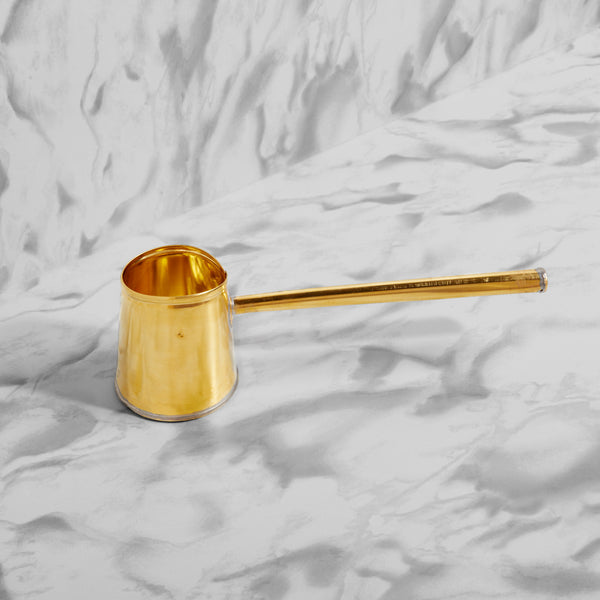THIS IS AN ARCHIVE OF EVERYTHING KIOSK HAS COLLECTED. TO MEET THE DIGITAL, WE HAVE A PHYSICAL, CURRENTLY IN STORAGE IN NEW YORK. NOTHING YOU SEE HERE IS FOR SALE. PLEASE USE AS A REFERENCE AND AN INSPIRATION AND PLEASE WRITE US IF YOU HAVE ANY QUESTIONS OR INFORMATION TO SHARE.
Coffee Pot
2.5"ø x 3.25" x 7" handle
Aluminum
GREECE
Note we do not call this object a “Greek Coffee Pot.” The reason: Greek coffee was called Turkish coffee in Greece until the 1960s, when tensions between Greece and Turkey flared. At that point, what was “Turkish” became “Greek,” although nothing changed. It is important to say Greek coffee in Greece; you won’t find Turkish coffee on the menu. Political tensions aside, “Turkish” coffee can be found in many countries that were formerly a part of the Ottoman empire (where coffee was first brewed), and throughout the Arabic world. The same beverage, which is called “Turkish” in many places, is also called “Arabic” (with sub-chapters: Egyptian, Syrian, Lebanese, etc.), “Greek,” as you know, and “Cypriot” and “Bosnian” coffee in their respective regions/lands. Heating water in the pot, or “briki” in Greek, one adds a small teaspoon or two of finely ground coffee with some sugar at the same time. A “medium” coffee, which is the way I take it, is equal parts coffee to sugar. Take it off the heat just as it starts to foam. Generally cooked over a flame today, it can also be found warming in a pan of hot sand, or a hovoli, to mimic the warm ash of a fire, the traditional cooking method. It is delicious. There is another magical coffee something I am wanting to tell you about, also from Greece. I could not bring it to you because it’s actually cold and frozen: it is called a frappe.The frappe is: Nescafe, milk, sugar, and ice, if you take it the standard way. No boiling required, only blending. Try Astoria.
